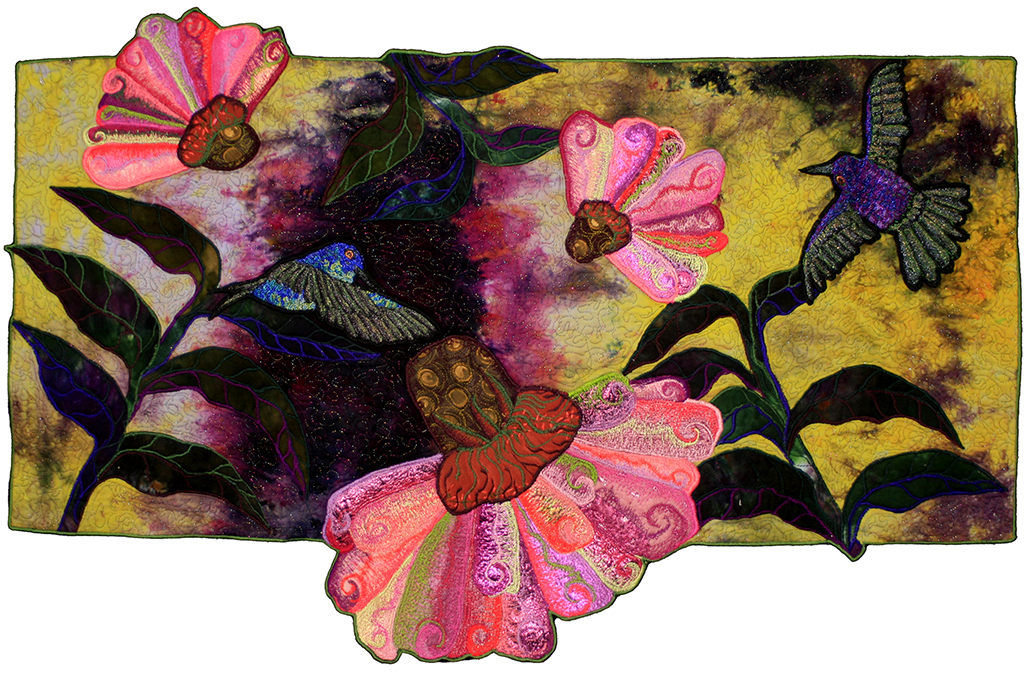Every quilt you want to hang will need to have a rod pocket. The tradition is that you sew a tube and hand sew it on, I will never live that long. I hate to hand sew. It certainly would feel like I’d lived too long if I had to sew rod pockets that way.
Enter the wonderful world of glue. I’m a fond friend of Steam-a Seam for applique. But it has a version that comes in strips that makes a snap out of making a rod pocket.
Now we all know not to trust glue. It can, and will come loose at the most miserable times. I always stitch it down eventually for safety’s sake. But there are seams that take stress and seams that don’t. For a seam that has nothing pulling on it, you can fuse it and forget it. And a rod pocket has 2 hems and a seam that does not bear weight or take stress.
Each rod pocket is a rectangle that needs to be hemmed at the short sides and joined into a tube. It’s easy to do that with a strip of Steam a Seam 2.
It can be done in two pockets if you want a break in the center for a hanging hook.
What size should it be? Depends on your rods and depends on the size of your quilt. But I always go a bit wider than I think is needed. 6-8″ for something small. For a larger quilt, a 12″ pocket isn’t too big. If I cut the length of the rod pocket to the size of the quilt, by the time I fold over the two hems, it’s a perfect size to hold a rod without the rod peeking out.
I’ve put Steam a Seam 2 down both ends of the rod pockets and ironed the two hems. Then I’ve fold ed the rod pocket into thirds. I put Steam a Seam 2 on the folded up edge, and folded the other flap to meet. Iron it down and you have your rod pocket.



So now you have your pocket, without a stitch in it.
The rod pocket holds up the weight of the quilt, so it does need stitching to hold. But we can put it into place and baste it with the Steam a Seam 2 to prepare it for stitching.



I always stitch a rod pocket down, but I glue them first. I put two lines of Steam a Seam 2 down the length of the rod pocket. I center them on the back of the quilt on top and iron them down.
Then I put monofilament nylon or poly into both the top and bottom of my machine and set my stitch on a hemming stitch. I’ll need the hemming foot as well. It rides right along the edge of the pocket.
Set the hemming stitch just a bit wider than it sets for a regular hem. Stitch down one edge and then the other.
Will it show? Not very much. You might find the line of stitching where the hemming stitch is, but I guarantee you’ll have to look hard for it. Job done. Not a hand needle in sight.

For more information about Steam A Seam 2 check out Sun, Clouds, Water, and Rocks. You’ll find Steam a Seam 2 in 1/2″ strips at Amazon or at your local quilt store.













































































